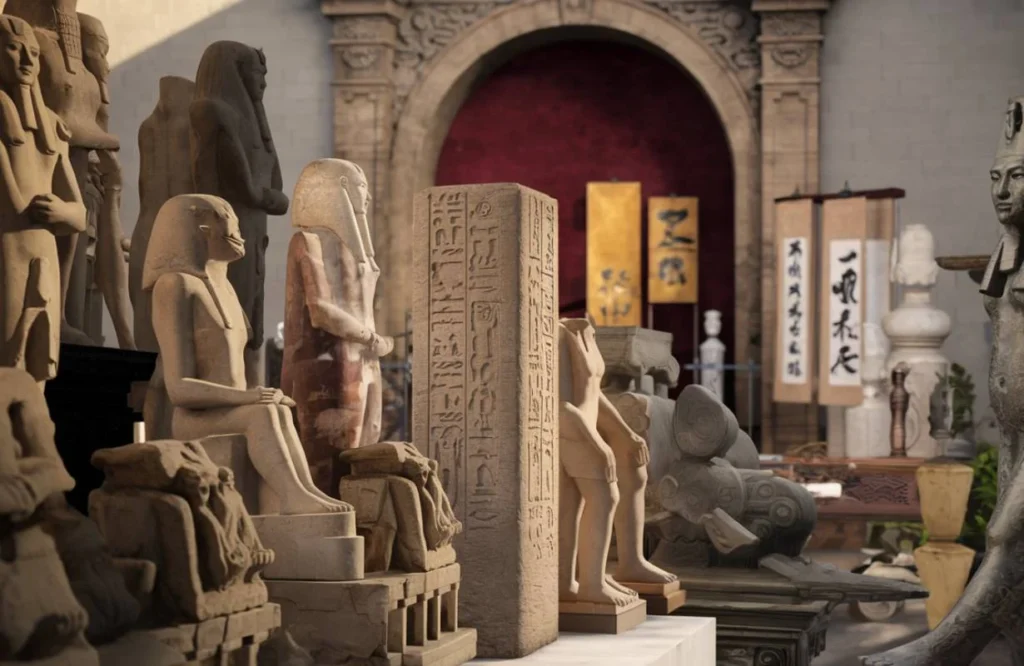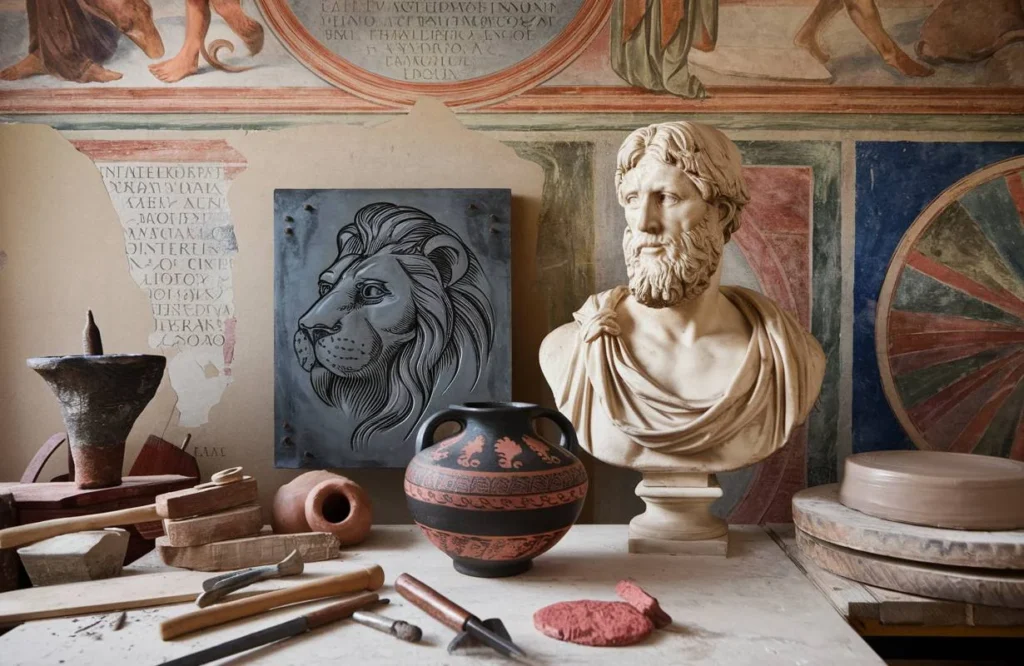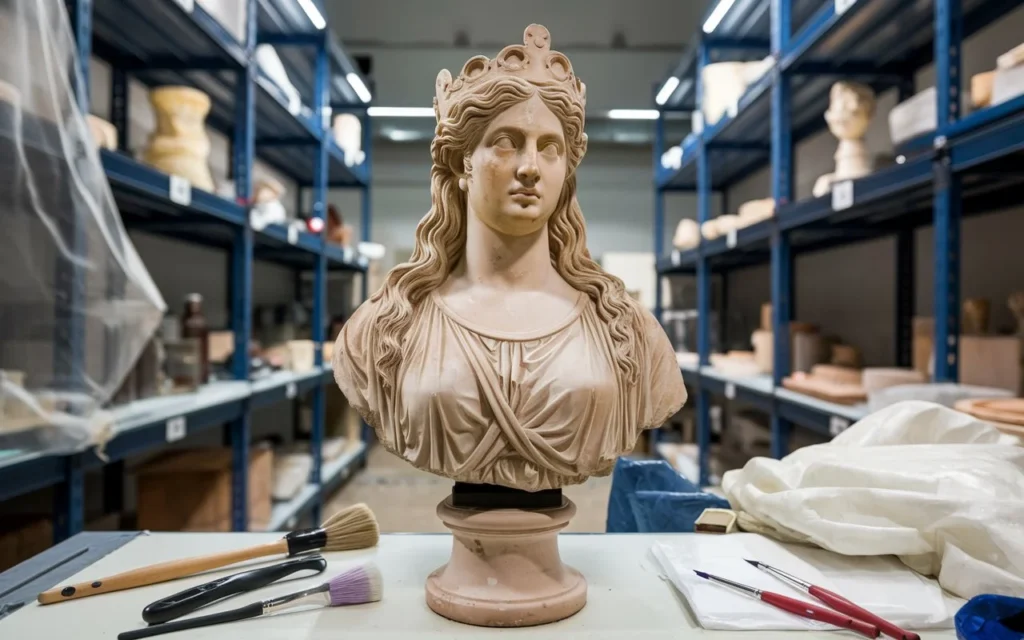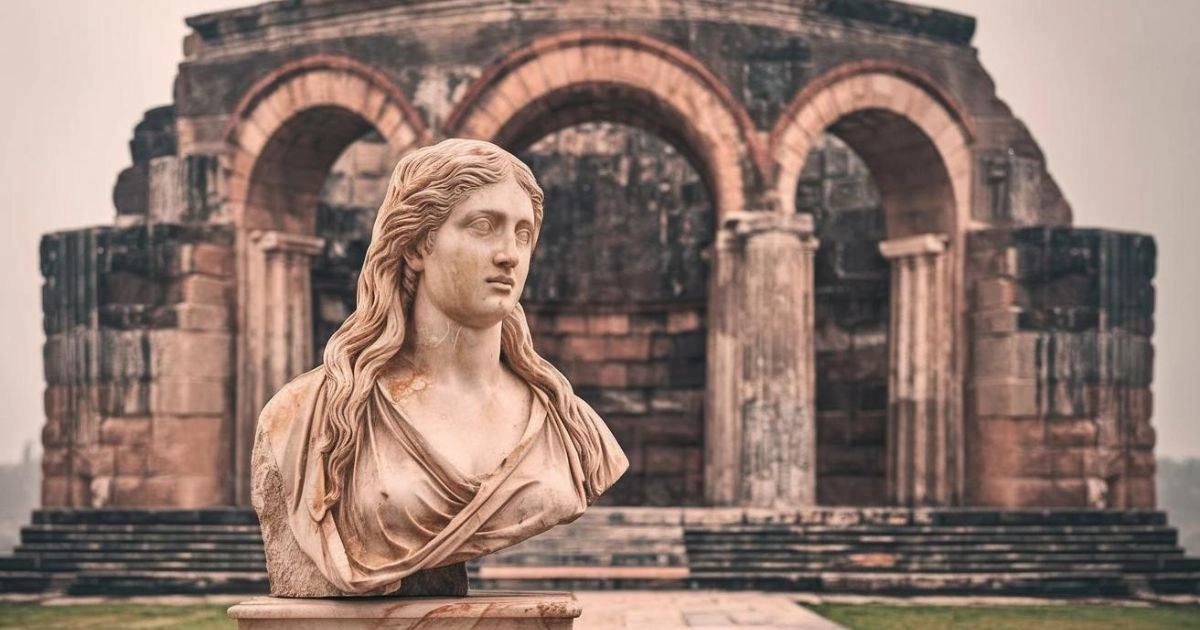Art is one of the primary cultural artifacts that humanity has created throughout all time, and ancient art was no different. This constant story is represented by ancient art as a fascinating chapter, displaying early human societies creative ability and technical strength along with an interesting spiritual connotation. In analyzing ancient artz, this study explores where they arguably began and the story behind several unique regions of the world influencing their design across different civilisations in history which has a legacy that continues to survive today.
Introduction to the Ancient Arts
Ancient artz refers to the general collections of from some vast include a number of preshistoric(literally before history, yes..) human cultures around the world over thousands years different types and media [1]! ~wikimedia! Taking its lead from the primitive cave paintings of yesteryear to sophisticating sculptures created by civilisations as far back as ancient Greece and Rome, it gives us a unique glimpse into our ancestral lives, beliefs and surrounds. While these works are a testament to the creativity of their makers, they also speak about how much humans have evolved spiritually and technologically as well as socially over time.
Definition and Scope
The topic of “Ancient artz” could be said to include starting roughly, but not limited to the prehistoric, Egyptian, Moses (Mesopotamia N), Greece and Rome cultures along with those on continental from known regions like India / China through Mesoamerica. This can refer to the paintings, sculptures, ceramics and architecture including others which are the finger prints of a culture in history.
The Origins of Ancient Artz

The ancient art journey starts with the earliest known human artworks, which shed light on both cognitive and cultural developments of early humans.
Prehistoric Art
From cave paintings to the ancient sculptures, prehistoric art was one of man’s most primitive forms; as rudimentary and straightforward it can be.
Cave Paintings
France: Lascaux CavesThe caves in France, discovered back in 1940, part some of the most well-known and amazing artwork everistogrammed. Some of these show animals such as horses, stags or bison and are some 17,000 years old. The paintings are characterized as being colorful and life-like in depicting animal conduct.
Venus Figurines
For example, the Venus of Willendorf was discovered in Austria and date back to about 28,000-25,000 BCE and although it is not possible to determine exactly what these little statues are they are commonly associated with fertility symbols or paradigms for female beauty. Notable for their emphasis on the female body and in early stages of symbolic reasoning.
Evolution of Ancient Artz
As human societies progressed from nomadic to sedentary agricultural enterprises, art began also to evolve in its purpose and complexity.
Neolithic Art
Farmers have the ability to make more permanent art pieces and this is how agriculture leads to preserved works. They recognized that Neolithic art, such as the detailed pottery and engraved sculptures (like murals at Catalhoyuk in Turkey) hold key to understanding early urban living and religious beliefs.
Styles in Ancient Artz
Every single ancient civilization had its own unique style of art, that related to the certain cultural values and technological capabilities they lived with.
Egyptian Art
The ancient artz Egyptians were known for the design of their art, and for much of Egyptian history, it was used on a daily basis in temples or tombs.
Hieroglyphics
The script, an ancient writing system which utilized pictorial symbols to represent sounds and words, By use of hieroglyphs, including religious texts and tomb inscriptions as well as monumental architecture, a link was made between art and language.
Sculptures and Statues
Egyptian sculptures such as the colossal statues of Ramses II and sphinx were created to serve as reminders for gods or pharaohs. The statues were typically in static, frontally posed rigid poses with the proportions formed according to ideal types.
Frescoes and Paintings
The walls of tombs and temples were decorated with Egyptian frescoes showing daily life, mythology and the afterlife. These elaborate and vibrant images were meant to make the dead feel at home in their new surroundings, which is good because they did a horrible job representing daily life.
Greek and Roman Art on Ancient Artz
One of the great ways that Greek and Roman arts have inspired western art is through their realism, in terms of detail in human form.
Greek Art
Greek art is concerned with idealism and proportion. The works of Phidias include, most famously (and controversially), the Parthenon sculptures in which he portrayed and idealised gods on Olympus. The Greeks also originated the three orders of architecture— Doric, Ionic, and Corinthian.
Roman Art
Although Roman art is a very realistic and innovative in its approach. The Romans were great at creating realistic looking portraits and busts of emperors like the one above, a bust of Julius Caesar. It exhibits high standards of engineering with the most remarkable styles drawn from Roman architecture, such as Colosseum and their Aqueducts building.
Chinese Art
The art of China covers thousands of years and is noted for its unique features, which include an emphasis on harmony, balance and naturalism.
Calligraphy
Considered a classical form of art in China, calligraphy is the practice of creating artistic characters through brush and ink. Practice: All well-known calligraphy such as “Preface to the Orchid Pavilion” by Wang Xizhi are regarded not only for their content but also skill and style.
Ink and Wash Painting
In particular, it focuses on brushstrokes and ink to depict landscapes with all their natural beauty. Artists such as Wang Wei or Xu Wei used ink wash to express simplicity and the spirit of nature.
Ceramics
In the Chinese tradition, in particular during the Ming and Qing dynasties, arguably some of the finest blue-and-white porcelain ever created was produced. These ceramics are also evidence of China’s high level at this time in kiln technology and artistic consciousness.
Indian Art
Spiritual and religious art from the Indian Subcontinent reflects this diversity being influenced by Hindu, Sikh,Buddhist and Muslim cultures.
Sculpture
Indian sculpture such as in intricate carvings of deities and mythological scenes. Some of these like the rock-cut temples at Ajanta and Ellora have beautiful carvings on Buddha, and some other religious images.
Temple Architecture
Indian temple architecture is unique for its intricate cravings and high roof-spire. Structures like the Brihadeeswarar Temple in Tamil Nadu and Kandariya Mahadev Temple in Madhya Pradesh, spectacularly exhibit the richness of Indian temple architecture.
Miniature Paintings
The colours used during that time to the beautiful Indian miniature paintings developed for royal courts. The Mughal and Rajput schools of painting, with works such as the Akbar Nama (1590s) and Ragamalas, portray scenes from courtly life,festive occasions, or reflect on historic events.
Mesoamerican Art
There are few ancient traditions of art in the world that are as well known–and yet so condensed–as that of Mesoamerican civilizations: mysterious peoples who built temples to gods scarcely identified and left behin decoative works they endowed with religious importance.
Maya Art
Stelae and murals are the most common Maya art depicting reigning figures, deities and mythological incidents. Especially renowned for the portrayal of Maya rituals and ceremonies are the murals from Bonampak.
Aztec Art
Aztec art was rich in elaborate stone carvings and featherwork. A huge basalt sculpture which shows the Aztec revolve around, called by introducing Sun Stone is one of most celebrated Top 10ivos Wild Chelsy Art Works.
Olmec Art
The Olmec are best known for the extraordinary twin heritage of huge basalt heads which were probably portraits of rulers or gods. They are notable for their size and very emotive character heads.
Materials and Techniques in Ancient Artz

Ancient art was made using different materials and by the means of processing techniques, which depended on available resources and technological possibilities. Rather, we can approach books by taking a closer look at some of the major materials and techniques used by different cultures:
Key Materials and Techniques of Ancient Artz
| Material | Description | Civilizations Known For |
| Stone | Used for monumental sculptures and architecture. | Egyptians (limestone, sandstone), Greeks (marble), Romans (concrete) |
| Wood | Employed in statues, furniture, and architecture. | Egyptians (wooden statues), Chinese (calligraphy brushes, temple construction) |
| Clay | Molded into pottery and figurines, often with intricate designs. | Greeks (amphorae), Chinese (ceramics) |
| Metal | Used for sculptures, jewelry, and ceremonial items. | Romans (bronze statues), Chinese (metalwork) |
Symbolism and Themes in Ancient Artz

In ancient art, symbolism communicated intricate concepts and philosophical ideas that translated to the screens. Every civilization employed symbols to communicate its cultural and spiritual concerns.
Common Themes and Notable Symbols of Ancient Artz
| Theme | Description | Examples |
| Religion & Spirituality | Artworks created to honor deities or convey religious narratives. | Egyptian tomb paintings, Indian temple carvings |
| Nature | Depictions of the natural world, reflecting the ancient understanding of nature. | Chinese landscape paintings, Native American art |
| Human Experience | Artworks depicting daily life, social structures, and personal experiences. | Roman frescoes, Greek vases |
| Symbol | Meaning | Civilization |
| Egyptian Ankh | Life and immortality | Egyptian |
| Greek Laurel Wreath | Victory and honor | Greek |
| Indian Lotus | Purity and spiritual awakening | Indian |
The Impact of Ancient Artz

Classical artz has had a lasting effect upon artwork and tradition, along with fundamentals of the highbrow culture. This impact is felt by different parts of everyday life.
Influence on Modern Art
Into our works, we introduce so many elements of every culture since — to a much greater degree than the Greek poets or medieval painters –we are able (thanks partly, for better and worse measures) actually even to know about them.
Cultural Preservation of Ancient Artz
Art has offered means of looking back at times gone by, reminding us all the things we have been and even what is now — Ancient arts tell stories; tales about civilizations that once existed, their culture beliefs.
Educational Value on Ancient Artz
Studying ancient visual culture provides a foundation for understanding the growth of artistic techniques and cultural sensibilities in various time periods and regions.
Read More: Discovering The://vital-mag.net Blog: An In-Depth Overview 2024
FAQs on Ancient Artz
1. What are some examples of prehistoric of Ancient Artz?
Prehistoric art includes the southwestern France cave paintings such as those at Lascaux and Venus figurines. It offers one of the first impressions into human creativity and the use of symbols.
2. What was unique to the Ancient Artz Egyptians from Greek Art?
The art of ancient Egypt is famously traditional, adhering to strict rules and conventions in an allegorical form that presents largely idealized representations of gods or men. Meanwhile, Greek art focused on realism and perfect human form as well as a focus on the idea of man in glorious form.
3. Generally, what did ancient art consist of?
This meant that stone, wood, clay or metal were the most likely materials to be used in ancient art. In each civilization the use of these materials depended on their availability and aesthetic needs.
4. To what extent does ancient art still impact modern culture?
The aesthetic, thematic and symbolic components of Ancient art are often used in modern culture. The work of the ancients still influences many artists today, and it strongly affected any worldview — be it historical or cultural.
5. Why is the study of ancient art important?
The art of ancient civilizations carries with it cultural, social and technological importance that we can learn from our history. And it tells us something about the ways in which humans have been creative and expressive over time, of how that plays — if at all — into behavior today (artistically or scientifically).
Conclusion on of Ancient Artz
Ancient artz is the sumptuous world that when unraveled shows human creativity and expression which developed into our cultural legacy. Since early cave paintings to the monumental heritage of ancient civilizations, the vitality of erstwhile art still encourages and enlightens us about a past human era. Studying these early works can deepen our understanding of the ways in which art has shaped humanity throughout history up to today.

